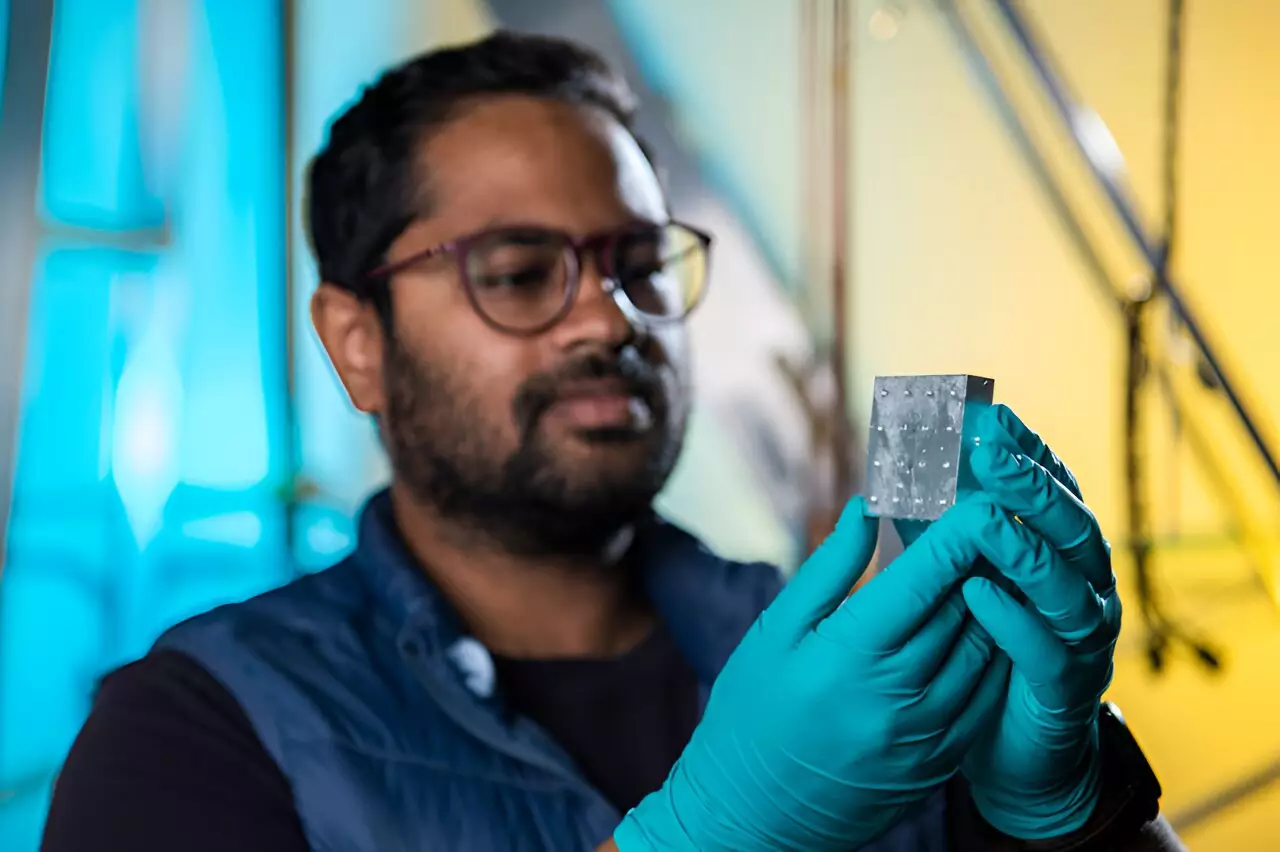In the quest to understand the universe, dark matter stands as one of the most tantalizing riddles. While conventional matter—everything from stars to planets—accounts for a mere fraction of our universe, dark matter comprises a staggering 85% of its total mass. However, this enigmatic substance has eluded direct detection since scientists cannot observe it using traditional instruments or means. Instead, researchers have had to rely on indirect methods of detection, probing the presence of dark matter through faint signals—often in the form of photons—that hint at its interactions with ordinary matter. The recent breakthrough by scientists at the U.S. Department of Energy’s Fermi National Accelerator Laboratory and the University of Chicago marks a significant leap forward in our understanding and detection capabilities. By employing innovative quantum techniques, they have enhanced dark matter signal detection sensitivity, thereby accelerating our journey toward unveiling this cosmic mystery.
The Challenge of Dark Matter Detection
Taxed with a substantial challenge, scientists working in the field of astrophysics often describe dark matter as “dark,” metaphorically, due to its inability to emit, absorb, or reflect light. Traditional detection methods often yield remarkably weak signals that pose grave challenges in discerning them from background noise. Consequently, if researchers could make detectors more responsive to these elusive signals, they could better the odds of detecting dark matter and expedite the search. The Fermi National Accelerator Laboratory team has embarked on this very challenge with remarkable success, showcasing how the fusion of quantum information science and physical inquiry can yield revolutionary advancements in our understanding of the cosmos.
A Novel Approach with Quantum Technology
At the heart of this groundbreaking study lies the enhancement of dark matter signals, which the researchers managed to achieve by a factor of 2.78. Graduate student Ankur Agrawal conducted this research as part of his doctoral thesis under the supervision of Fermilab scientist Aaron Chou, demonstrating the impact of quantum states in amplifying detection capabilities. By utilizing superconducting quantum bits, or qubits, the research team prepared a microwave cavity in a highly specialized quantum state known as a Fock state. This is akin to effectively gearing up a detection mechanism, making it more attuned to capture the subtle effects of dark matter as it interacts with the cavity walls.
The Science of Sensitivity
The experiment follows two principal avenues to enhance the likelihood of detecting dark matter signals: increasing the strength of the signal itself and curbing any surrounding noise that may obscure it. Adopting a sophisticated approach, the researchers prepared a cavity designed to foster a coherent microwave signal, allowing dark matter to stimulate the emission of photons. By configuring qubits to probe the generated photon field iteratively, they cleverly manage to minimize noise while amplifying potential signals generated during dark matter interactions.
In essence, their methodology can be likened to applying gentle pushes to a child on a swing. If you apply force when the swing is at rest, it requires more energy; however, if the swing is already in motion, less force will be required. The same principle applies to the electromagnetic field within the microwave cavity, enhancing its sensitivity to incoming dark matter.
Innovative Cooling Techniques
Reducing ambient noise is paramount in conducting precise measurements under these experimental conditions. To achieve this, the team employed a dilution refrigerator to cool the cavity to near-absolute zero temperatures—one-hundredth of a Kelvin—rendering it several magnitudes colder than outer space. This extreme cooling minimizes thermal photon interference, which can otherwise cloud the detection of dark matter signals. The meticulous engineering of qubit-photon interactions allows researchers to measure photons multiple times without destroying them, a critical advantage in determining the presence of dark matter.
The Broader Implications
This innovative approach not only hastens the search for dark matter but opens the doors to exploring other fundamental scientific enigmas. The implications of this research extend beyond the realm of dark matter; advancing our understanding of the universe may very well hinge on these pioneering quantum techniques. As the mapping of dark matter’s influence on cosmic structures progresses, we may find ourselves at the precipice of a new era in astrophysics that reshapes our foundational concepts of matter, energy, and the nature of existence itself.
With scientific endeavors increasingly anchored in the realms of quantum mechanics, the potential for new discoveries is monumental. Each advancement in this field not only enhances our passion for exploration but promises insights that could redefine our understanding of the universe. In this dynamic landscape of physics, the application of quantum science stands poised to profoundly influence our cosmic narrative.


Leave a Reply